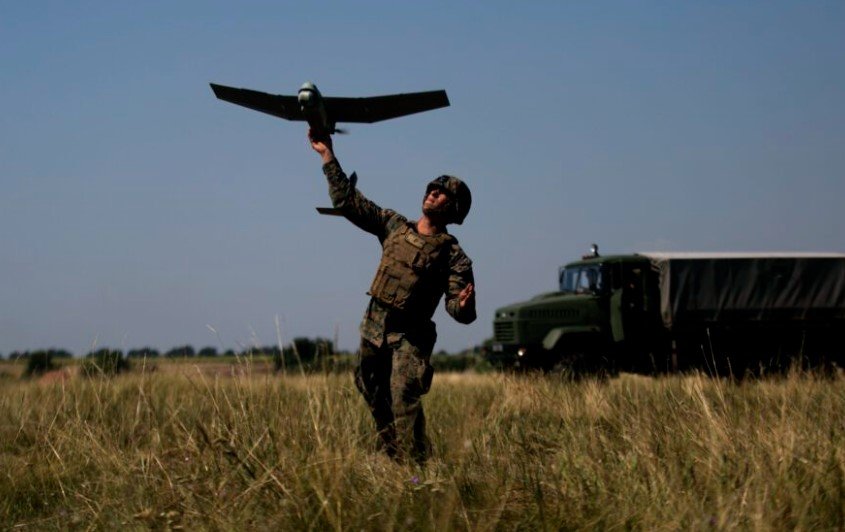A covert Ukrainian drone operation punched thousands of kilometers past the frontline, wreaking havoc at Russian airbases—using tech cheaper than a family sedan.
Ukraine pulled off one of the most ambitious military sabotage operations in recent memory. Dubbed “Spider’s Web,” it was a bold, low-cost strike with high-impact results. Over 40 Russian warplanes were destroyed or damaged, including strategic bombers parked deep inside Russia. All with drones that cost just $1,200 apiece. Let that sink in.
This wasn’t a video game. It wasn’t fiction. NDTV’s AI-rendered video lays it out frame by frame—explosive-laden wooden crates, hidden drones, semi-trucks, and a remote-controlled launch sequence that unfolded like clockwork.
The Ghost Trucks That Rolled Into Russia
It started with trucks. Ordinary trucks. Nothing fancy—no armored plates or stealth coatings. Just semi-trailers. The kind you’d see hauling groceries or furniture.
Inside, though, they held something much more dangerous: 117 drones packed in wooden containers. The roof panels of those boxes could open on remote command, allowing the drones to rise like a swarm of wasps at dusk.
Ukrainian operatives didn’t drive them. The truck drivers? Totally unaware.
Zelensky called it an “operation for the history books.” He wasn’t exaggerating. The distance to some targets—like the Belaya air base in Irkutsk—was over 4,000 kilometers. That’s beyond the reach of Ukraine’s known missiles or drones.
Key takeaways from this bizarrely simple yet devastating attack:
-
117 drones per truck, each costing roughly $1,200
-
Drones launched from within Russia via remote activation
-
Operatives smuggled in, then smuggled out before the strike
-
Russian losses pegged at $7 billion in aircraft damage
A-50s, Tu-95s, and Tu-22Ms Didn’t Stand a Chance
The aircraft on Russia’s tarmacs weren’t training jets or rusty relics. We’re talking serious machines—bombers that routinely rain hell on Ukrainian cities.
That’s not just a hit to Russia’s pride. It’s a strategic dent. One that could slow missile attacks and rework months of planning inside the Kremlin.

In fact, SBU estimates say 34% of Russia’s strategic cruise missile carriers based in those airfields were taken out in just a few hours.
Deep Inside Enemy Lines—Right Under FSB’s Nose
Here’s where the story swerves from daring to absurd. Zelensky said the entire operation was managed from an office located next door to a Russian FSB facility. That’s either trolling at the highest level or a security failure Moscow won’t live down for a long time.
These weren’t ordinary drones either. They were FPVs—first-person view systems, meaning they could be flown like RC planes, guided by live video feeds.
To get them in place, Ukrainian agents smuggled the drones into Russian territory, stuffed them into containers, and set them up for launch.
The operatives? All safely exfiltrated before anything exploded.
One sentence can’t do justice here.
But here it is: They set up shop in Russia, ran logistics under FSB noses, launched the attack, and ghosted out—all without a trace.
Russia Responds, But Can’t Explain It All
Russia’s Ministry of Defence admitted that drone attacks hit five regions. Air defences, they claimed, repelled most. But not all.
Murmansk and Irkutsk weren’t so lucky. FPV drones got close—real close. Fires broke out. Aircraft burned. Some attackers were allegedly detained.
The ministry, typically tight-lipped or overly dismissive, didn’t deny the hits. That alone says a lot.
Still, they emphasized there were no casualties. Just machines. Machines worth billions.
And here’s something quietly terrifying: Russia launched a drone barrage against Ukraine on the same day—472 drones in one night. A record. A possible revenge shot.
Why It Matters More Than You Think
Sure, this was about hardware. About tactical hits and surprise warfare. But there’s another layer here. Timing.
The attack happened one day before peace talks began in Istanbul. Coincidence? Doesn’t seem like it.
A Ukrainian official said off-record that the message was intentional: “We’ll come to the table. But we won’t come empty-handed.”
The optics couldn’t be sharper. As Russian negotiators took their seats in Turkey, their air force was counting smoldering wrecks.
And meanwhile, the world watched an AI-generated video showing how a country with far fewer resources just made its enemy look foolish.
This wasn’t just an airstrike. It was psychological warfare in high-def.
